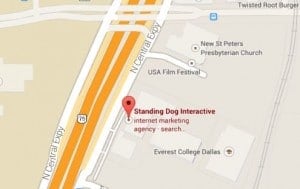When you take a photo using your iPhone or Android mobile phone, the location data (latitude, longitude) of where that image was taken is usually saved in the photo file. Other information, such as the device that took the photo, and the image size, is also saved. The data that is saved in the image file itself is typically called “EXIF Data“. By editing image files before you upload them, you can add additional information to those files, which ultimately could help your local search engine optimization efforts.

If you would like to see an example of this, save the image above to your hard drive. Then, right-click on the photo and select “properties”. You will see all of the data that I saved/embedded in the image file.
I recently ran a test using an image that I uploaded to the Google+. I wanted to know whether or not Google crawls and reads the EXIF data that is saved in image files. For this test, I made up a word and embedded or “saved” that word in the EXIF data in the image file itself. This made up word appears nowhere else on the web except for in EXIF data in that image file. For the actual results of that test, you will need to read my post on the Standing Dog blog. I am sure that you will be surprised, though, about what happened and how quickly it happened.
As a result of my test, I’m now going to recommend that you include the latitude, longitude, and NAP (Name, Address, Phone Number) data, as well as a title, description, and tags in every photo or image. Here is a list of what I would include:
Name
Address
City
State
ZIP Code
Country
Phone Number
URL
Latitude, Longitude
Elevation
Title
Subject
Tags
Keywords
Category
Subcategory
There is a lot more information that can typically be added, even the author and the photographer and the copyright information (which is optional). I recommend, though, that you be as thorough as you can with all of this information. Be accurate. Include the location of where the photo was taken, but don’t fudge it just for search engine optimization purposes.
As part of a local search engine optimization strategy, you will want to include the NAP data of the local business, as well as properly adding the keywords (tags) and a title that describe the subject of the photo.
It is my belief (even more so after seeing the results of my recent test) that the search engines are, in fact, crawling and viewing this information, and will continue to do so in the future. We may never know how much they rely in that data, but as a good “best practice”, providing as much information as you can in an image file is appropriate.